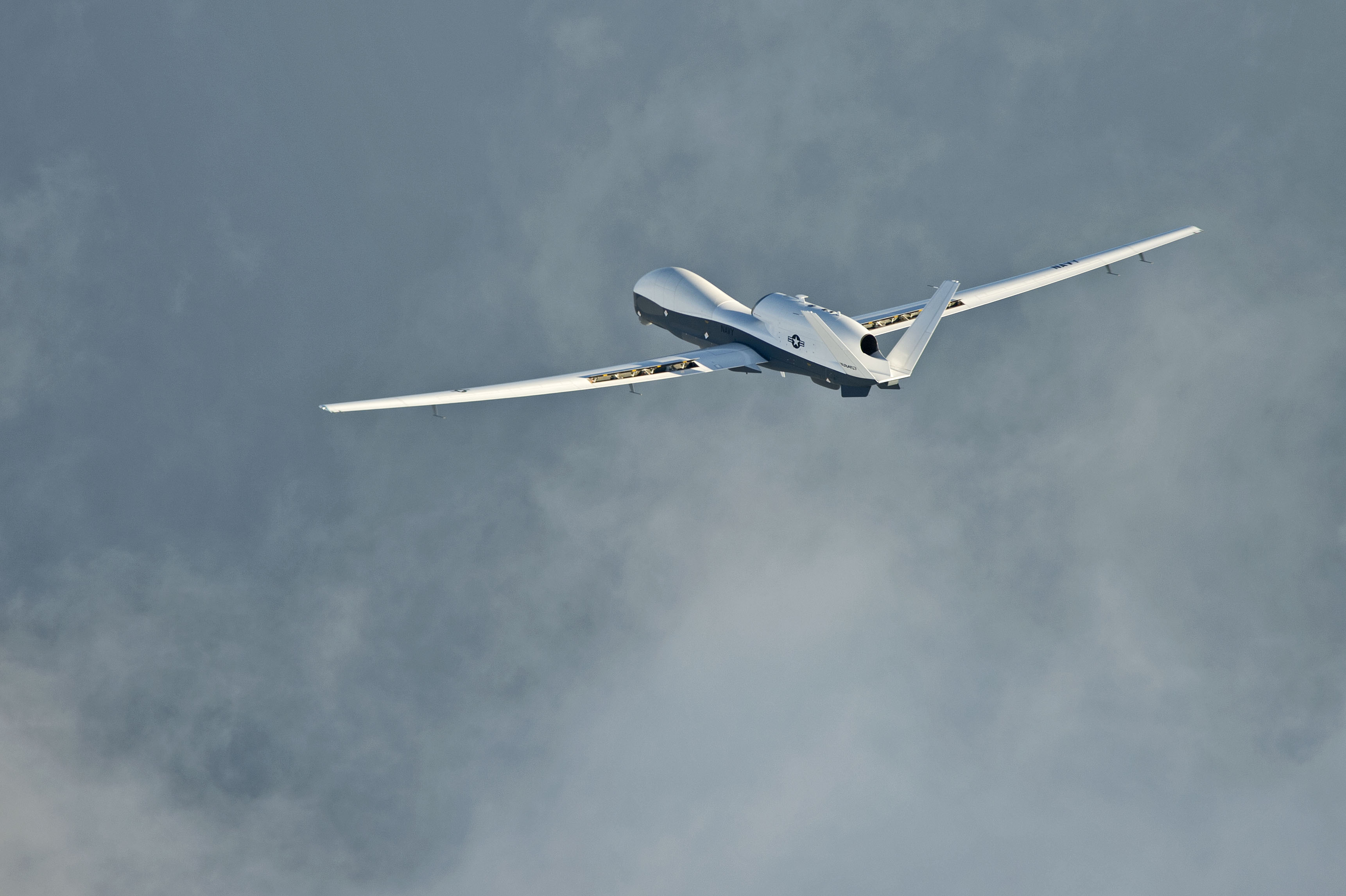
NAVAL AIR STATION PAXTUXENT RIVER, MD. — The U.S. Navy program manager for the Northrop Grumman MQ-4C Triton unmanned maritime surveillance aircraft said that the service might consider reducing the number of jets it buys.
The Navy currently plans to buy 68 Tritons, Capt. Jim Hoke, Naval Air Systems Command’s (NAVAIR) Triton program manager told reporters on Tuesday.
However, the service may not need that many aircraft as the MQ-4C is probably much more reliable than the service originally anticipated.
The Navy needs enough Tritons to maintain five orbits—each of which requires four aircraft to sustain.
That means the service needs 20 aircraft flying at any given time, plus depot maintenance and attrition reserve planes, Hoke said.
However, the Navy originally had intended to buy 68 aircraft to account for losses and any sort of reliability issues, Hoke said.
But operational experience is showing that unmanned aircraft like the MQ-4C do not crash as often and are far more reliable than the service originally anticipated, Hoke said.
That means the service could reduce the number of Tritons it buy without reducing the requirement for the number of orbits the jets would need to fill.
Hoke said that the development of the MQ-4C is on track for the aircraft to enter the fleet in 2017 with an early operational capability of two aircraft.
Due to budget cuts, the Navy could not afford to have the four aircraft it needed for initial operational capability (IOC) built for that year, Hoke said. Thus, with two additional aircraft projected to enter the fleet six months later, the Triton should be IOC in 2018.
Currently, once the fiscal year 2015 budget is passed, the Navy hopes to award advanced procurement contracts for long lead parts of the first lot of low rate production jets, Hoke said. The first low rate initial production lot is scheduled for 2016, but as of right now, the Navy does not know how many jets it will be able to afford, he added.
Flight testing of the MQ-4C’s sensor suite will start at the beginning of 2015 with the integrated functional capability (IFC) 2.2 software—which will have enough functionality to meet the requirements of the Pentagon’s Milestone C decision. Milestone C is where senior leaders decide if a weapon is ready for production.
The fully functional IFC 3.0 software suite, which will have all of the radar modes and geo-location capabilities needed for an operational MQ-4C will be ready by 2016. The fleet will receive a full-up capability in 2017, Hoke said.
However, what the MQ-4C will lack in 2017 is a sense-and-avoid capability radar — a system that will allow the aircraft to detect and maneuver around another aircraft.
The Navy hopes to have a solution by 2020, Hoke said. The original contractor ran into developmental challenges with the radar, which has to fit into a space at the front of the jet.
Hoke said that while on the surface the problem does not appear to be that difficult, the reality is that the sense-and-avoid radar is extremely technically challenging to develop. There is no existing radar that operates in the assigned frequency bands, that meets the performance needs that also fits the available space, weight and power requirements, Hoke said. Further, the radar must not interfere with the MQ-4C’s primary surveillance radar.
Because of those factors, the Navy must develop an entirely new radar, he said. The service has a path going forward, but Hoke said he was not ready to share that information yet.
Until the sense-and-avoid capability is available, the Navy will have to come up with procedures and training to mitigate for the problem. Fleet operators will have some capability to deconflict with other aircraft traffic—the MQ-4C will be equipped with automatic dependent surveillance-broadcast (ADS-B) and the traffic alert and collision avoidance system (TCAS).
Those systems would enable the MQ-4C to avoid traffic equipped with the right transponders—but not aircraft not fitted with such equipment.





